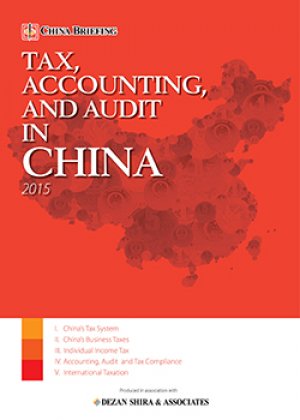Options Available when Restructuring a China Business
This article discusses two of the four options for restructuring as mentioned in our June 2015 magazine “How to Restructure an Underperforming Business in China“. For more information, please refer to the magazine.
By Dezan Shira & Associates
Beijing, Shanghai and Shenzhen Offices
Option 1: Reduction of operations
Tax filing requirements
According to relevant laws and practices, foreign invested enterprises (FIEs) will need to file tax returns (monthly, quarterly and annually) with the tax bureau, even if no business activities are involved and only a few personnel are employed. The FIE must also structure its financial statements and the calculation of miscellaneous expenses (e.g. bank interest/charges, rent, office expenses, etc.) to maintain compliance with the Chinese accounting regulations.
Annual inspection/annual report with the AIC
Before March 1st, 2014, FIEs were required to go through annual inspections and update their business licenses to ensure basic compliance. However, as of March 1st, 2014, this has been replaced by an annual report submission. If the annual report is not submitted as required, the FIE shall be listed in the Directory of Enterprises with Abnormal Operations. If listed FIEs fail to publish their annual report after three full years, they will be recorded in the Directory of Enterprises with Serious Non-compliance, otherwise known as the ‘Blacklist’, which will lead to a higher level of regulatory scrutiny as well as future limitations on their ability to conduct business in China.
Maintaining proper office lease
Generally speaking, to maintain business continuity and avoid revocation of the business license, FIEs intending to go ‘dormant’ are required to have a qualified office space and pay rent. An FIE may wish to move into a less expensive office space to satisfy these basic compliance requirements. It usually takes 1-2 months to update the address at various government authorities and amend the business license. Some properties (e.g. residential properties or a partitioned space within a large office) may not be acceptable for office registration. It’s therefore advisable to ensure that the new office satisfies the corporate registration requirements before signing the lease agreement.
![]() RELATED: Using Serviced Offices for Business Registration
RELATED: Using Serviced Offices for Business Registration
Maintaining corporate bank account
A corporate bank account would have to be maintained to support the FIE’s basic operations (e.g. rent, accounting, compliance expenses and other office overheads). Any change of the corporate bank account should be recorded and filed with the local tax bureau. In addition, the account balance must be reviewed and verified during the annual audit. Without a proper bank account, the FIE may not be able to complete the annual audit.
Risk involved when reducing a WFOE’s operations
Technically speaking, the WFOE is a profit-making structure. The tax bureau will therefore expect the WFOE to make money; the business license may be revoked if the company is not profitable for several years. The WFOE may be exposed to a higher risk of regulatory scrutiny by the tax bureau if it reports losses for three consecutive years.
Option 2: Conversion
The practice of “converting” an RO to a WFOE is in fact a misnomer – de-registering an RO and establishing a new WFOE are two separate procedures. As an RO is not a legal personality, the term de-registration is used instead of liquidation, though the two processes share many similarities.
The procedures involved in converting an RO
An RO de-registration begins at the tax bureau (for which the RO must conduct an audit and clear tax liabilities) and proceeds to all other relevant authorities. It can take six months to more than two years to complete. More details are shown below. Establishment of the new WFOE and the RO de-registration can be done simultaneously. However, the WFOE incorporation process should likely be started before the RO de-registration process begins, as the WFOE will need to have a business license and bank account in order to have employees from the RO transferred to the WFOE.
The WFOE establishment process will take three to five months and further involves registering with all government bureaus.
 This article is an excerpt from the June 2015 issue of China Briefing Magazine, titled “How to Restructure an Underperforming Business in China“. In this issue of China Briefing, we explore the options that are available to foreign firms looking to restructure or close their operations in China. We begin with an overview of what restructuring an unprofitable business in China might entail, and then take an in-depth look at the way in which a foreign company can go about the restructuring process. Finally, we highlight some of the key HR concerns associated with restructuring a China business. This article is an excerpt from the June 2015 issue of China Briefing Magazine, titled “How to Restructure an Underperforming Business in China“. In this issue of China Briefing, we explore the options that are available to foreign firms looking to restructure or close their operations in China. We begin with an overview of what restructuring an unprofitable business in China might entail, and then take an in-depth look at the way in which a foreign company can go about the restructuring process. Finally, we highlight some of the key HR concerns associated with restructuring a China business. |
![]()
 Tax, Accounting, and Audit in China 2015
Tax, Accounting, and Audit in China 2015
This edition of Tax, Accounting, and Audit in China, updated for 2015, offers a comprehensive overview of the major taxes foreign investors are likely to encounter when establishing or operating a business in China, as well as other tax-relevant obligations. This concise, detailed, yet pragmatic guide is ideal for CFOs, compliance officers and heads of accounting who must navigate the complex tax and accounting landscape in China in order to effectively manage and strategically plan their China operations.
 Human Resources and Payroll in China 2015
Human Resources and Payroll in China 2015
This edition of Human Resources and Payroll in China, updated for 2015, provides a firm understanding of China’s laws and regulations related to human resources and payroll management – essential information for foreign investors looking to establish or already running a foreign-invested entity in China, local managers, and HR professionals needing to explain complex points of China’s labor policies.
China Investment Roadmap: the Automotive Parts Industry
This issue of China Briefing presents a roadmap for investing in China’s automotive industry. We begin by providing an overview of the industry, and then take a comprehensive look at key foreign investment considerations, including investment restrictions, tax incentives and manufacturing requirements. Finally, we discuss foreign investment opportunities in a part of the industry that receives substantial government support: new energy vehicles.
- Previous Article With New Environmental Protection Tax, the Polluter Now Pays in China too
- Next Article A Step by Step Guide to Remitting Dividends Overseas










